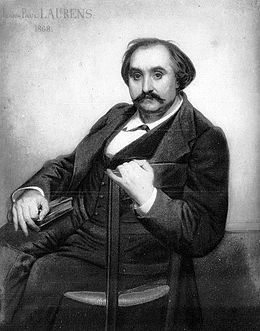 | ||
Died 11 February 1898, Paris, France | ||
Ferdinand Fabre (9 June 1827, Bédarieux – 11 February 1898, Paris) was a French novelist.
Contents
Biography
Ferdinand Fabre was born in Bédarieux in the upper valley of the Orb, in the department of Hérault, the setting for his novels. Under the influence of his mother, he entered the small seminary of Saint-Pons-de-Thomières and, in 1847, the large seminary of Montpellier. His uncle, a priest in Camplong, is mentioned in his books. The description of his experience in the ecclesiastical milieux provides one of the main themes of his novels.
In 1848, before taking his final vows, he abandoned his priestly vocation and briefly attempted the study of medicine in Montpellier. He then went to Paris and was articled as clerk to a lawyer. In 1861, shortly after his marriage, he became the Inspecteur de la Librarie Étrangère at the customs house in Calais. He eventually left his civil service position and devoted himself entirely to literary work. He went to live in Paris where his social circle included many writers and artists. Among his closest friends was the writer Hector Malot. Fabre was also a close friend of the painter Jean-Paul Laurens, whose biography he wrote.
His daughter Valentine Clotilde Fabre was born in 1858 and died in 1942. She married Ferdinand Auguste Emile Duviard (1859–1949) and gave birth to a son Ferdinand Duviard (1889-1965), who became a writer and Esperantist, and a daughter Henriette Léonie Duviard (1895-1974).
He died five days before his agreed-upon election to l'Académie française. In the 15th arrondissement de Paris, the Rue Ferdinand-Fabre is named in his honor.
His novel Le Chevrier (and the poem by Maurice Audubert-Boussat) inspired the 1925 opera Le Chevrier by Émile Goué. Fabre's novel Xavière inspired the 1895 opera Xavière by Théodore Dubois.
